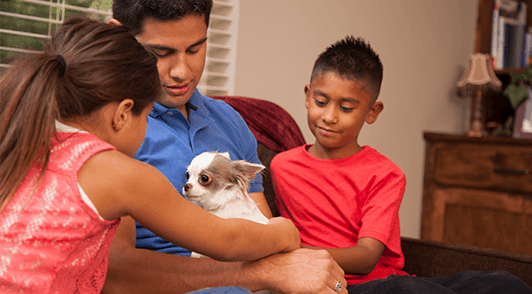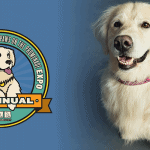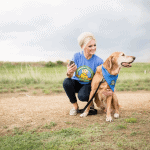We’ve all seen the jokes about how tired our dogs are of being walked and how our cats are ready for us to return back to work, leaving them to relish in the house undisturbed. While these are largely untrue (we have to believe that the majority of animals are loving this extra time with and attention from you!) there is some truth to the confusion that our pets are experiencing with stay-at-home and social distancing measures in place. Even humans are confused!
To help minimize the stress of these transitions, there are things you can do now to help to set your animal up for success, for what will surely be a perplexing time for them once schedules change again. “It is important for owners to know that separation anxiety, whether minor or severe, is truly about anxiety – it’s not your pet ‘getting back at you’ for leaving or being mad when you don’t take them with you, it’s really a sign of distress,” says Mary Babbitt, head of the Behavior and Enrichment Department at Larimer Humane Society. With a little planning and consideration today, our hope is that you can mitigate any separation anxiety related problems which might otherwise arise when your regular routine and absences resume.

“With so many families adding new pets to their home and spending more than normal amounts of time with their animals right now (yay!), it is our hope that armed with this knowledge, you can proactively set your animals up for success for the long-term. Our community of animal welfare and behavior professionals are so eager to support you,” Allison Hartlage, Manager of Animal Training and Behavior Humane Society of Boulder Valley.
Here are a few easy things you can do for your dogs and cats to help them navigate these transitions:
Dogs: One of the main risk factors for separation anxiety is a change in routine. To best set our dogs up for success, you should:
- Leave your dog alone multiple times per week – go for a walk (without your dog!), call a friend while enjoying some sun, read a book in a separate room. The most important thing is to leave your dog alone only as for long as they are comfortable. This might be 10 minutes, it could be an hour – do what works for you and your dog. For example, if they begin to experience distress (barking, whining, pacing, etc) at 20 minutes, only leave them alone for 15 minutes and then work toward 20. If you’re concerned about your dog getting into mischief or are unsure of their comfort level when left alone, monitor them while you are away with technology like Furbo, Zoom, Facetime, or others.
- Crate training is beneficial for adult dogs and puppies alike! When introduced properly crates can help your dog feel safe and help protect your belongings from bored or anxious chewing.
- Signs your dog is okay being left alone:
Relaxed body postures, sleeping, eating treats you left behind, drinking water, self-play.
What to do:
Continue leaving your dog home alone frequently in the hopes that they will continue to be comfortable with absences once they forcibly return. - Signs your dog is feeling stressed:
Pacing, whining, howling, barking, accidents in the house (only when you are away), destruction near exits and entrances, inability to settle, self-injury.
What to do:
Avoid leaving them home alone for a length of time that would elicit this response and seek help from your vet and a member of our Behavior Department. Find our Behavior Department’s info at the end of this document. - Set up a “fun-zone” for them in another area, but separate from you. The fun zone might include stuffed Kongs (lots of recipes here: https://www.kongcompany.com/lets-play/recipes), bully sticks, Nose Work hides, snuffle mats, etc.. You want them to know that many fun things can be enjoyed even without you there!
- Invest in some sturdy doggie food puzzles! Food puzzles help dogs burn energy, exercise their minds, boost their independence, and can even slow down chow hounds. (Can they make these for humans during stay-at-home orders, too, please?)
Cats: Cats are also social creatures, and they can experience separation anxiety, too. For this reason, we’d recommend a similar approach to that listed above for dogs.
- Time alone daily, even just while the family takes a short walk.
- Give your kitty fun activities they can do alone. Furry mice, foam balls, feathered objects and other toys can be left out for your cat to find. Some cats enjoy food and treat puzzles, too (read on for some suggestions)! For best results, collect a variety of toys and rotate them often.
- Provide hiding places! These can be cardboard boxes, tunnels, or play cubes. You could consider installing cat shelves, a new tower, or a seat with a window view. As an added bonus, you could install a bird feeder outside the window for entertainment.
- Engage your cat’s problem solving and hunting skills with puzzle toys, like a rolling cat feeder, or an activity center. These tools are also a great way to slow down enthusiastic eaters and keep your cat entertained!
- Make sure there are ample “legal” scratching outlets – scratching is a healthy way for cats to get some energy out and display natural behavior. Make sure the scratch opportunities you are providing are sturdy, tall, and a material that your cat enjoys scratching. There are many homemade options!
- For cats that are struggling to adapt to a new home or are unhappy when you leave, consider trying the plug-in pheromone “Feliway” that can help cats feel calmer.
“Our pets are social creatures. It’s no wonder they can suffer when separated from us. Treating separation anxiety can be challenging; however, there are many resources available to the pet parents,” Marissa Martino, community liaison and former behavior manager of the Dumb Friends League.
Remember: you are not alone! If you feel you need additional support or your pet already experiences discomfort when left alone, please contact our free Behavior Helpline at: behaviorhelp@nocohumane.org or 970.226.3647 ext. 513.
If your pet is suffering from anxiety, there are many different calming products that can help to relieve the anxiety and stress that they experience. Our friends at Poudre Pet and Feed Supply offer many different anxiety calming products including Earth Buddy, a family and friend-owned company based in Colorado that makes organic calming products for pets. Pick up Earth Buddy and other pet essentials at Poudre Pet and Feed Supply!





